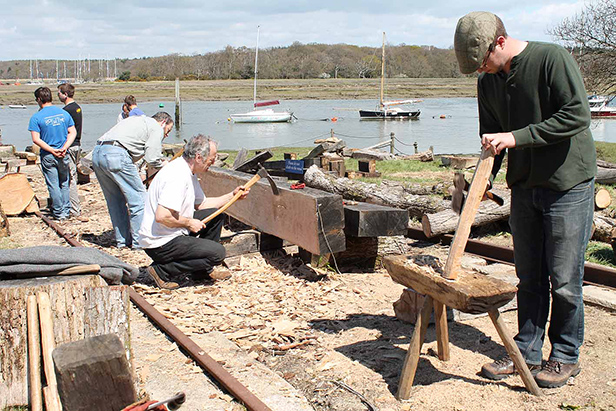 Buckler’s Hard, on the banks of the Beaulieu River, could soon become a centre for the teaching and study of traditional shipbuilding with students able to work with large timbers under the supervision of a shipwright.
Buckler’s Hard, on the banks of the Beaulieu River, could soon become a centre for the teaching and study of traditional shipbuilding with students able to work with large timbers under the supervision of a shipwright.
This will soon be a reality thanks to a £3.75m Heritage Lottery Fund (HLF) grant to Portsmouth Naval Base Property Trust (PNBPT) for its Boatbuilding & Heritage Skills Training Centre project, which includes a Shipwright’s School to be established at Buckler’s Hard.
Mary Montagu-Scott, Director at Buckler’s Hard & Trustee of the IBTC Portsmouth, said: “We are very excited to be working with PNBPT on this project and that our long held wish to revive traditional shipbuilding training at Buckler’s Hard, on the very site where Admiral Lord Nelson’s favourite ship Agamemnon was built, is now close to fruition.”
Plans have been drawn up to build a replica 18th century shipwrights’ workshop in an area at the bottom of the village street, near to the eastern slipways and by an existing display of timber workings.
The timber framed building will be used as a base for the school, which will be run in partnership with the IBTC Portsmouth, based in Boathouse 4 at Portsmouth Historic Dockyard. The training provided will help to ensure the continuation of much needed skills at both a local and national level for the restoration of historic ships and support the traditional boat building industry. It is hoped that the first student intake will be in April 2015.
The close proximity of woodland with standing timber will present an important opportunity to teach arboriculture techniques and theory, and allow students to learn about the felling, conversion and storage of timber. The first stage of this exciting project will be to construct the workshop using local timber; this build will be a learning exercise in its own right, with students using traditional tools and methods.
Visitors to Buckler’s Hard will also be encouraged to visit the workshop. By seeing a practical demonstration of shipbuilding methods, it is hoped that everyone will gain a better understanding of the industry which gave the village a place in British naval history.






